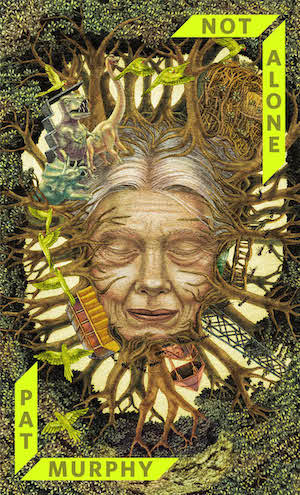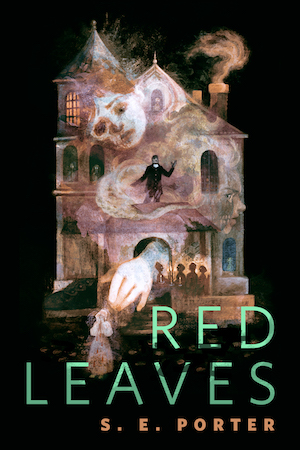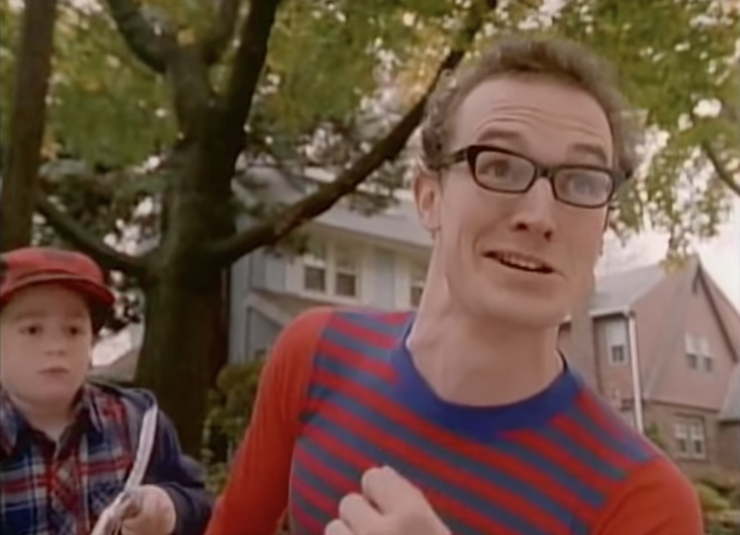Welcome to Close Reads! In this series, Leah Schnelbach and their guests dig into the tiny, weird moments of pop culture—from books to theme songs to viral internet hits—that have burrowed into our minds, found rent-stabilized apartments, started community gardens, and refused to be forced out by corporate interests. This time out, Catherine Baab-Muguira takes a happily deranged look back at that most surreal of ’90s television shows.
At my wedding, my brothers and I danced to “Hey Sandy” by Polaris, theme song of The Adventures of Pete & Pete, which aired on Nickelodeon from 1993 to 1996. It’s not the easiest song to dance to—you can only kind of mosh around—but the figurative gesture was what counted. Years before, we’d spent some happy times lying on our beige den carpet, faces turned up to our huge 32-inch family television, watching what AllMusic later dubbed “the greatest children’s show ever.”
Was this a sign of discerning tastes? No, we just watched a lot of TV. The internet remained several rooms away, trapped inside the family computer, and time on it was still a special-occasion thing while we sprawled in the den, sucking down everything Nickelodeon had to offer. Still, we did recognize Pete & Pete as a good show. It was high-quality in a way we couldn’t have described then and isn’t straightforward to summarize even now, because you can sound like you’re overly impressed by the street-cred stuff: the cameos by Debbie Harry, Patty Hearst, Juliana Hatfield, et all. Iggy Pop’s recurring role as a baffled neighborhood dad. The absolutely top-shelf indie rock soundtrack.
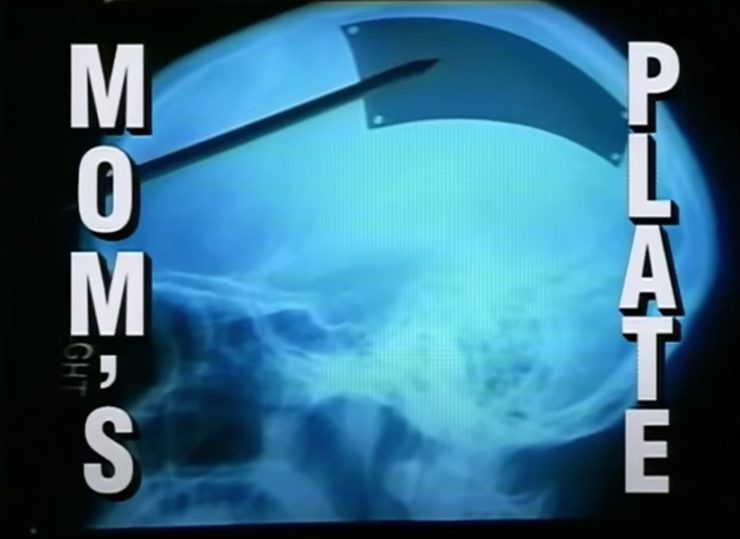
What Pete & Pete really offers is more ephemeral and yet more real, a vibe, a sensibility, a sense of the world’s strangeness that anyone lost in the suburbs—not just children—will recognize. The setting is a boring town called Wellsville, located in fictional Glurt county, and the main characters are two brothers, both named Pete Wrigley. Then there are the other kids in the neighborhood and their parents, plus various bus drivers and crossing guards, with the characters’ obsessions and quirks guiding the plots, such as they are. Mysteries abound and are never explained: The Wrigley brothers’ mom has a plate in her head that picks up obscure radio signals. A bowling ball boasts terrible powers. The younger Pete, who’s not quite a tween, sports several tattoos, and his best friend, Artie, is a superhero who springs around Wellsville in red long johns and dress shoes without socks—decades before anyone in Brooklyn got the idea—shouting the word “pipe.”
Buy the Book
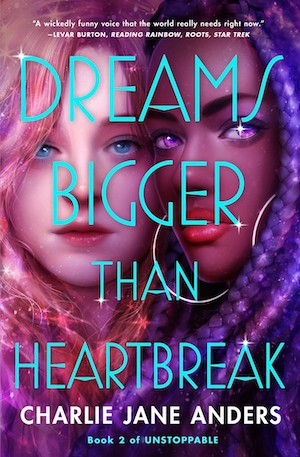

Dreams Bigger Than Heartbreak
From there, things just keep getting weirder. In one episode, we learn how the high-school math teacher, as a baby in her cradle, spotted the number two and thought it was her mother. In another episode, the meter reader turns out to be a psychic who sees the future in the unit’s spinning needle. His vision? Young Pete led to the promised land by Martin Van Buren, eighth president of the United States who, the meter reader intones gravely, “used giant sideburns to conserve face heat.”
The effect is to capture how crazy the world seems when you’re a kid—and especially how unfathomable adults can seem until you realize their bizarre preoccupations with lawn care and kids’ bedtimes arise from a deadening lust for power. Re-watching the show to write this essay, what struck me was how reliable this worldview remains, proving more insightful than it did in ’96, how prescient even. Take, for example, the two-part episode, “Farewell, my Little Viking” from season two.
Here’s the plot:
Fed up with how Artie (young Pete’s superhero best friend) encourages the children to rebel against meaningless rules, the International Adult Conspiracy, a “secret anti-kid organization,” hatches a plan to banish Artie forever. Led by a charismatic aluminum-siding salesman named Jack McFlemp, the conspirators convince Pete’s dad, “a simple man in a complicated situation, easy prey for the International Adult Conspiracy” to drive Artie to the Glurt county line, effectively exiling him, and leaving young Pete to face the local bullies alone, including a scab-encrusted seventh-grader named Papercut. Worse, McFlemp successfully bribes Artie with a pair of permanent press slacks to become an aluminum-siding salesman himself, notching up “a victory for adults everywhere.”

With Artie neutralized, The IAC begins its crackdown: The children are made to burn their Artie memorabilia, and a hotline is instituted so people can call in to report Artie discussion in schools. All appears lost. Then Dad’s conscience gets to him, and he fetches Artie back for good. Yet, returning to town, Artie realizes young Pete has grown capable of fighting his own battles. He resolves to go mentor another helpless kid, and in a touching scene, he and Pete say goodbye in the street, with young Pete asking plaintively, “Will I ever see you again?”
In voiceover, the elder Pete reflects on Artie’s greatest strengths, his most valuable contributions. “What is it that makes a superhero?” he asks. “Is it muscles of steel? The ability to see through brick walls? To turn yourself into a human butane torch? Or is it smaller, like with Artie, a way of looking at the world and making everything in it a little bit stranger and a little bit better?” This is the show coming out with it, stating its values: The strangeness we spy as kids is real. Resistance to adults’ power-hunger is possible as well as good, as is trusting one’s own instincts and impressions. Subtler and less apocalyptic than Salinger, it’s hardly an unhopeful vision. There is, if anything, a touch of naiveté in it. Something that reads like optimism.
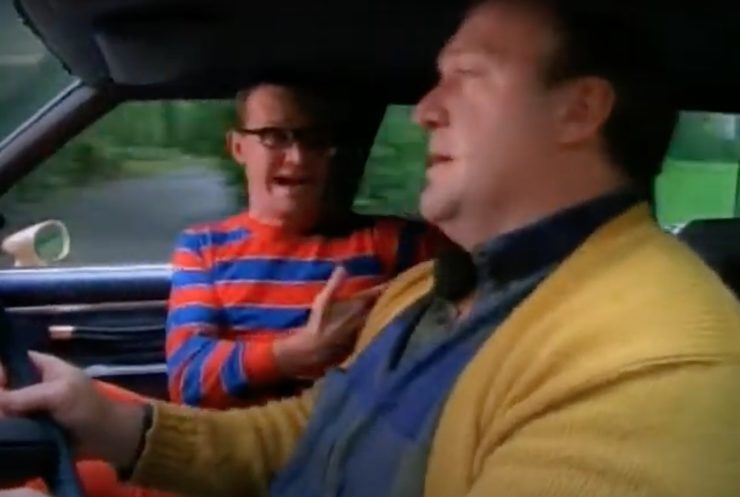
I want to say the show could be forgiven for this naiveté, that in some way strangeness was a more neutral matter in the ‘90s, though I doubt that’s actually true. When people look back at their childhoods and imagine that time as simpler, it’s usually because they’re describing their cognitive development then, not some more valid reality. We recognize that some Boomers’ nostalgia for the 1950s is not based on the ‘50s being some genuinely better era. All the ‘90s nostalgia now circulating should make us just as wary. The ‘90s weren’t some age of innocence. Far from it. I was just a kid who couldn’t follow Clinton impeachment trial or whatever.
Frankly, I wish now that I couldn’t spot the parallels between the International Adult Conspiracy and our present moment’s formal and informal organizations of clueless yet power-hungry would-be authoritarians. I wish the plate in Mom’s head picking up strange media weren’t such an on-the-nose portrait of some Boomers (though not just Boomers). But I also think this is what makes Pete & Pete so resonant, so watchable to this day though it’s ironically hard to find on any streaming service, so that you’re mostly confined to pirated material on YouTube. It’s not surreal for the sake of it: The absurdity indicates a considered perspective.
Kingsley Amis once wrote that what distinguished pre-WWI poetry from the poetry that came after was the pre-shock worldview—the sense of people having confidence in their civilization, which he said was lost wholesale after about 1914. A similar gestalt makes most pre-2016, pre-COVID media too gaga innocent for me to watch. The Office, funny and carefully observed as it is, now seems to take place on a kinder planet far, far away. Compare something from even further back, say 1998’s Deep Impact, to Adam McKay’s 2021 Don’t Look Up. The first movie has confidence in its civilization’s ability to recognize problems if not solve them. The second one is about civilization’s inability to recognize problems because, for a whole variety of reasons, no one agrees on reality.
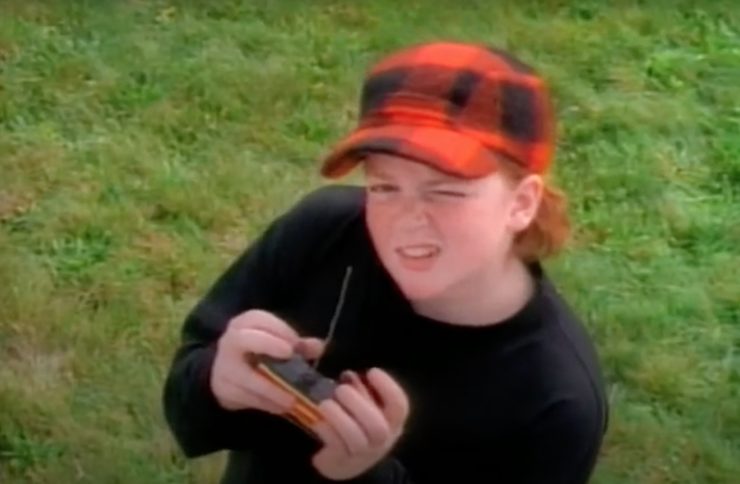
Pete & Pete doesn’t have any pre-shock issue. It still rings true, which helps explain its cult following today. A couple of years ago, members of the cast did a comedy show at a club around the corner from the apartment where I was living in Park Slope, and I meant to go but forgot to buy tickets. Oh well, I thought, there’ll be another time. How’s that worked out for me? How’s it worked out for you? Now we’re all home watching reruns, life as strange a mix as in the before-times, if not quite in the same way. At least “Hey Sandy” still rocks.
Catherine Baab-Muguira is the author of Poe for Your Problems: Uncommon Advice from History’s Least Likely Self-Help Guru, just published by Hachette in September. It’s the world’s first (and so far only) self-help book based on Poe’s life and work, and it will most definitely change your life.


